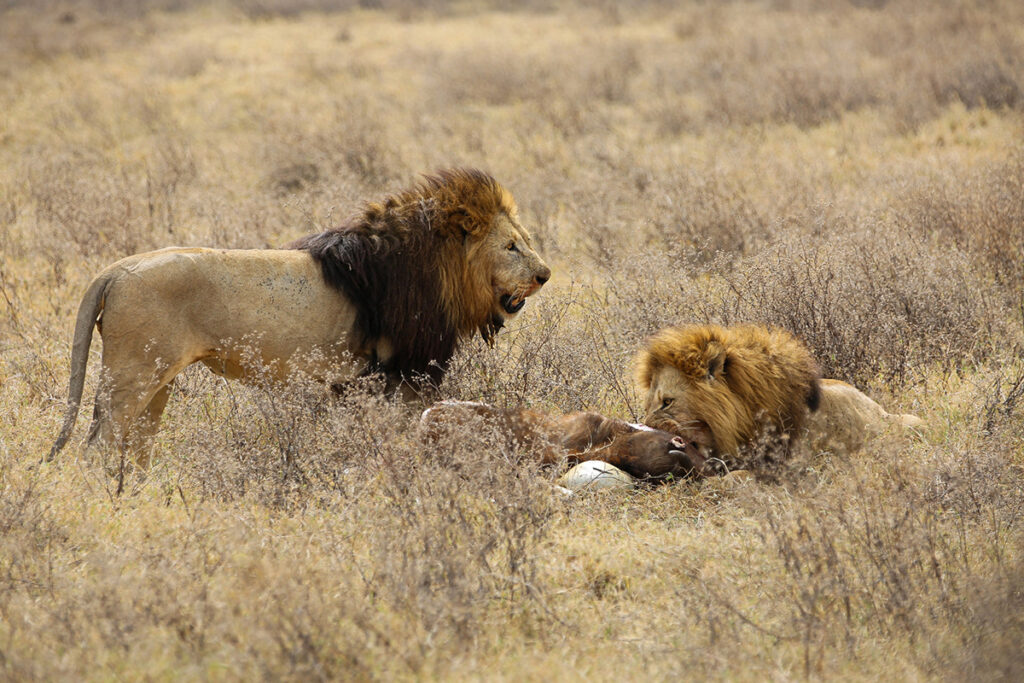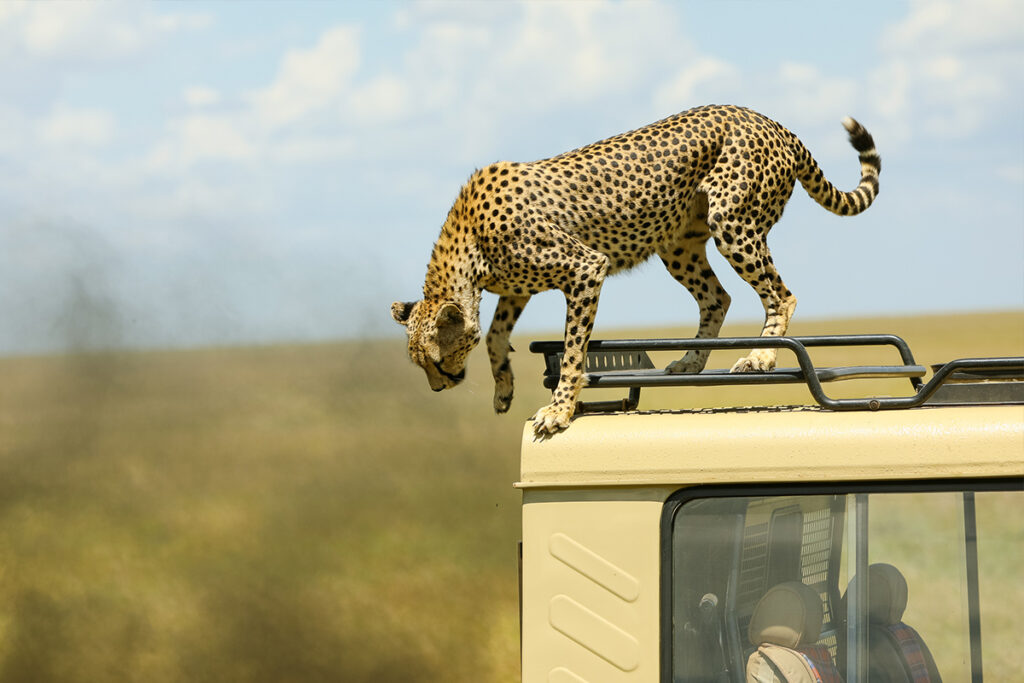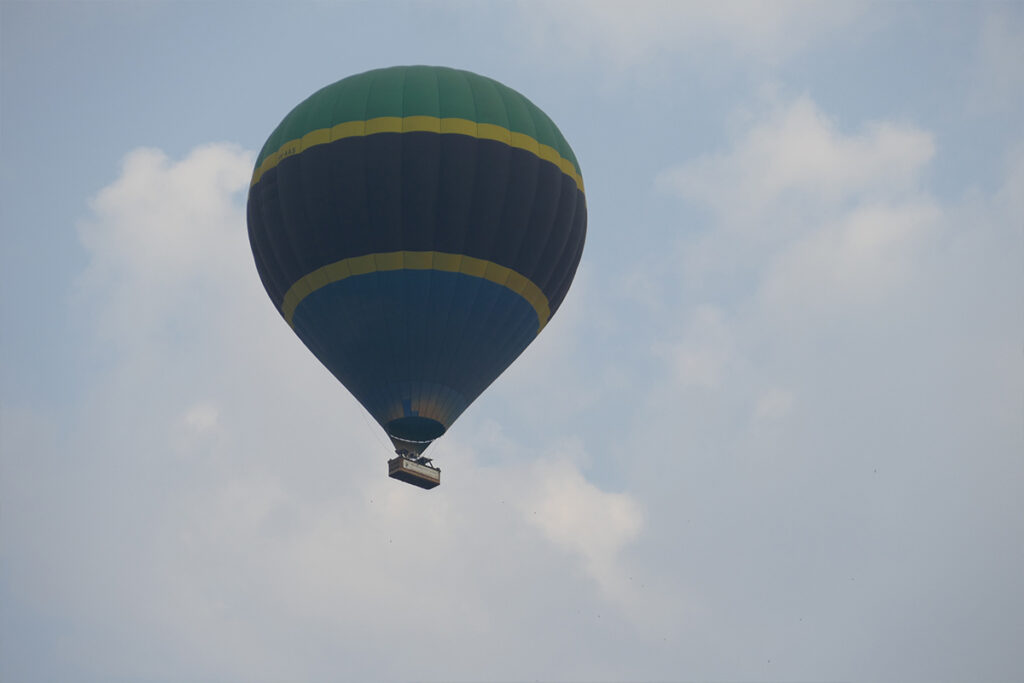When it comes to witnessing the marvels of wildlife, timing is everything. In Tanzania, the dry season, which spans from June to October, offers an unparalleled safari experience. This period is marked by clear skies, ample sunshine, and the most incredible concentration of game animals as they gather around water sources.
The rich history of Tanzania’s national parks, combined with stable weather, makes the dry season a magnet for safari enthusiasts. During these months, the Serengeti and Ngorongoro Crater transform into a haven for wildlife sightings, including the Great Migration. Statistics reveal that visitor satisfaction peaks in this season, cementing its reputation as the optimal time for a safari adventure.

Dry Season Safari Tanzania: Why It’s the Best Time to Go
Visiting Tanzania during the dry season offers unmatched wildlife viewing opportunities. The lack of rain means animals gather around water sources. This makes it easier to see lions, elephants, and many more. The dry season spans from June to October, traditionally the best time for safaris. Tourists can enjoy clear skies and comfortable temperatures.
The weather is mostly sunny, creating the perfect conditions for photography. Minimal rainfall means paths and roads are more accessible. This is important if you plan to visit remote areas. Access to these places allows for a richer safari experience. Travelers often have a better chance of spotting rare or elusive animals.
During the dry season, animals’ behavior is more predictable. They tend to gather in the same spots, making for thrilling safari rides. Predators like lions and cheetahs frequently visit watering holes. Observing these interactions offers unique and exciting experiences. Witnessing such dynamics adds excitement to the adventure.
Tanzania’s economy benefits greatly from the dry season safari influx. Tourists bring revenue that supports local communities. Many locals work as guides, contributing to sustainable tourism. Visitors to national parks help fund important conservation efforts. This season, therefore, plays a crucial role in the region’s overall economy.
Optimal Wildlife Viewing Opportunities
In Tanzania, the dry season creates optimal wildlife viewing opportunities for safari enthusiasts. With water sources dwindling, animals are forced to gather around few available spots. This congregation makes it easier to spot and observe a variety of species. From majestic elephants to playful zebras, the display is mesmerizing. Such scenes are perfect for capturing memorable photographs.
The Serengeti is a hotbed of activity during this period. It displays a fascinating mix of predator-prey dynamics. Lions, known as kings of the jungle, are more visible as they hunt for food. Visitors can witness these incredible scenes unfold right before their eyes. The Great Migration is another spectacular event not to be missed.
At watering holes, you can see a community of animals sharing the same space. They include
- giraffes
- antelopes
- buffalo
, all coexisting with minimal conflict. These gatherings offer unique insights into animal behavior. You might even spot pythons or crocodiles lurking nearby. Such proximity provides an exciting mix of thrill and learning.
Apart from the big-name parks, smaller reserves like Tarangire offer unique experiences. Here, you can find large herds of elephants roaming the landscape. With fewer tourists, these reserves offer a more intimate viewing experience. Guides often highlight lesser-known stories about the animals. It adds depth to your wildlife adventure.
Minimal Rainfall and Favorable Weather Conditions
During Tanzania’s dry season, minimal rainfall creates ideal conditions for a safari adventure. Clear skies ensure exceptional visibility for wildlife watching and photography. Without rain, the trails remain accessible, allowing exploration of diverse landscapes. The dry air also reduces the risk of diseases spread by mosquitoes, such as malaria. Visitors can enjoy a stress-free experience with these favorable weather conditions.
The consistent sunshine keeps the days pleasantly warm, ideal for outdoor activities. Tourists can expect daytime temperatures ranging from 25 to 30 degrees Celsius. The evenings, however, bring a cooler breeze, offering a refreshing break from the daytime heat. This balanced climate is perfect for a variety of safari activities. It caters to the comfort of travelers, enhancing their overall experience.
Minimal rainfall leads to the congregation of animals around water sources. With scarce water, wildlife becomes easier to find and observe. This increased visibility leads to memorable encounters with a wide range of species. Guides often take advantage of these conditions to lead successful tours. The predictability enhances both the educational and entertainment value of safaris.
Light clothing and a hat are often sufficient for protection against the sun. Packing some essential items like sunscreen and sunglasses is advised. The list of recommended gear includes:
- sturdy walking shoes
- insect repellent
- binoculars
These help in making the journey comfortable and enjoyable. Being prepared means fully savoring the incredible Tanzanian landscapes.
Enhanced Accessibility to Remote Areas
The dry season in Tanzania significantly enhances accessibility to remote areas. With reduced rainfall, roads and pathways that are usually impassable during the wet season become navigable. This accessibility opens up lesser-known parks and reserves for exploration. Travelers can venture deeper into the wilderness, discovering unique landscapes and secluded spots. It provides an opportunity for a well-rounded safari experience.
Remote areas often house species not commonly seen in more popular parks. These include rare birds and unique plant species, enriching the safari adventure. Guides can plan detailed itineraries, ensuring visits to these hidden gems. Such excursions offer a sense of exclusivity and adventure. It allows visitors to encounter the diverse beauty of Tanzania.
Smaller reserves and private conservancies also benefit from the dry season. They are more accessible, promoting conservation efforts and community-based tourism. These places often provide personalized experiences due to fewer visitors. The intimate setting enables deeper engagement with the wildlife. Guests often feel a strong connection to these environments.
Amenities in remote areas improve with better weather conditions. Campsites and lodges remain operational, offering comfortable overnight stays. Essential services, such as guiding and food supplies, are reliably available. This viability allows for multi-day excursions into the wild. Travelers can immerse themselves fully, knowing their needs are met.
Plan for these remote adventures with suitable gear. Adding items like a detailed map and extra fuel is advisable. Suggested packing list includes:
- portable water filter
- first aid kit
- flashlight
These tips enhance safety and comfort during the journey. Being prepared ensures an enjoyable experience in Tanzania’s remote areas.
Predator and Prey Dynamics at Watering Holes
The dance between predator and prey at watering holes is a captivating spectacle. During Tanzania’s dry season, these areas become focal points for wildlife activity. Animals of all sizes gather to quench their thirst, creating a vibrant scene. The close proximity of predators and prey heightens the tension. Observing these interactions offers an insight into the rawness of nature.
Lions and leopards are common predators found near watering holes. They stealthily watch from shaded areas, waiting for the perfect moment to strike. Prey animals like zebras and gazelles often form groups to increase their chances of survival. This grouping makes it harder for predators to single out a target. Yet, the ever-present risk keeps every creature on high alert.
Crocodiles, though often overlooked, play a key role in these dynamics. They remain underwater, almost invisible to unsuspecting animals. Their sudden attacks are fast and powerful, making them formidable hunters. Such interactions display the unpredictability of the natural world. Watering holes serve as places of both life and sudden danger.
Watching these dynamics offers lessons in survival strategies. Prey animals constantly adapt, developing alertness and agility. Predators rely on patience and cunning to make successful catches. Observers learn how each creature plays a crucial part in the ecosystem. It’s a dance of survival that continues to fascinate those who witness it.
Visitors should approach these areas cautiously. Always maintain a safe distance from wildlife. Essential items for such visits include:
- binoculars
- camera
- field guidebook
These tools ensure both safety and a rewarding viewing experience. They enhance understanding and appreciation of Tanzania’s incredible wildlife.
Impact on Local Tourism and Economy
Dry season safaris in Tanzania significantly boost local tourism. With favorable weather and accessible roads, tourist numbers peak between June and October. This influx supports many businesses, from lodges to local artisans. Increased revenue during these months is crucial for their survival. The season brings economic vitality to the entire region.
Guides and tour operators see a major uptick in demand. Their expertise becomes invaluable for ensuring memorable and safe wildlife experiences. These jobs offer stable income for many local families. It’s a sustainable model that helps the community thrive. Visitors enjoy authentic insights into Tanzanian culture through these local interactions.
The tourism boom also benefits conservation efforts. National parks and reserves use entry fees to fund wildlife protection initiatives. Conservation programs are critical for preserving Tanzania’s unique biodiversity. Tourist support enables the management and maintenance of these natural habitats. It helps secure the future for both wildlife and the environment.
Infrastructure improvements are another positive outcome. More tourists prompt upgrades in facilities, transport, and healthcare services. This development benefits both visitors and locals alike. Improved amenities enhance the quality of life and attract even more travelers. It’s a cycle of growth that benefits the entire region.
However, managing this growth sustainably is essential. Overcrowding can strain resources and affect the natural experience. Efforts to ensure responsible tourism are critical for long-term success. Suggested practices include:
- following park guidelines
- minimizing waste
- supporting local businesses
These actions contribute to a balanced and eco-friendly tourism model.
Challenges and Considerations for Travelers
Traveling to Tanzania for a dry season safari requires careful planning. One major consideration is managing the high demand during this popular time. Early bookings are essential to secure accommodations and tours. Popular locations can fill up quickly, leaving limited options for late planners. Ensuring your plans are flexible will help in dealing with any last-minute changes.
Health precautions are another important aspect to consider. Vaccinations, such as those against yellow fever, might be required before entry. Mosquitoes, though less active in the dry season, still pose a risk of malaria. Bringing strong insect repellent and wearing protective clothing at dusk is advisable. Preparing a travel health kit enhances safety during the trip.
The vastness of Tanzania means long travel distances between destinations. You should plan additional time for transit to avoid being rushed. Comfortable transportation options make the journey more enjoyable and less tiring. Having a guide familiar with routes ensures smoother navigation through remote areas. It allows travelers to focus on enjoying their safari experience.
Weather conditions, while generally stable, can vary within regions. Packing layers helps manage variations between warm days and cooler nights. Essential items include
- sunscreen
- a hat
- sturdy hiking boots
Dressing appropriately keeps you comfortable in changing climates, ensuring you maximize your adventure outdoors.
Cultural considerations enhance respect and interaction with local communities. Travelers should familiarize themselves with common practices and polite behavior in Tanzania. Learning basic phrases in Swahili can foster goodwill and enrich experiences with locals.
- “Jambo” (Hello)
- “Asante” (Thank you)
- “Karibu” (Welcome)
Demonstrating cultural sensitivity creates meaningful connections during the visit.
Comparative Analysis With Other Safari Seasons
When comparing the dry season to other safari seasons in Tanzania, several points stand out. The dry season, from June to October, is known for its clear skies and optimal wildlife viewing. This contrasts sharply with the wet season, which runs from March to May and November to December. Wet seasons bring heavy rains and lush landscapes, but wildlife is more dispersed. This makes animal sightings less predictable and sometimes challenging.
During the wet season, the scenery transforms into a vibrant green paradise. The abundant rainfall leads to a blooming of flowers and greener pastures. However, the downside is muddy paths and flooded areas, making travel tough. Vehicles often struggle with these conditions, limiting access to certain areas. Mosquitoes are more prevalent, increasing the risk of malaria during this period.
The shoulder seasons, which are the intervening months, offer a mix of both experiences. In these times, the weather is more unpredictable. April and May might still have residual rains, while November and December can have early storms. Wildlife viewing is moderate, with some animals still near water sources from the dry season. These months can be a good option for budget travelers due to lower rates.
Another factor is the Great Migration, which is most spectacular in the dry season. During this period, vast herds of wildebeest and zebras cross the Serengeti in search of water and grazing. Observing this phenomenon is difficult in wetter months. Tourists specifically visiting for the migration often opt for the dry season to guarantee sightings. It adds a unique and dramatic aspect to the safari experience.
Here’s a quick comparison overview:
| Season | Weather | Wildlife Viewing | Travel Conditions |
|---|---|---|---|
| Dry Season | Clear skies, minimal rain | High | Easy and accessible |
| Wet Season | Heavy rains, lush landscapes | Moderate to low | Challenging and muddy |
| Shoulder Season | Unpredictable weather | Moderate | Variable |
This comparison helps travelers choose the ideal time for their Tanzanian safari based on preferences and priorities. Each season has its pros and cons, making planning essential for the best experience.
Key Takeaways
- Tanzania’s dry season runs from June to October, ideal for safaris.
- Clear skies and minimal rain enhance wildlife sightings.
- Animals gather at water sources, boosting visibility.
- Stable weather ensures accessible safari routes.
- This period offers the overall best safari experience.



